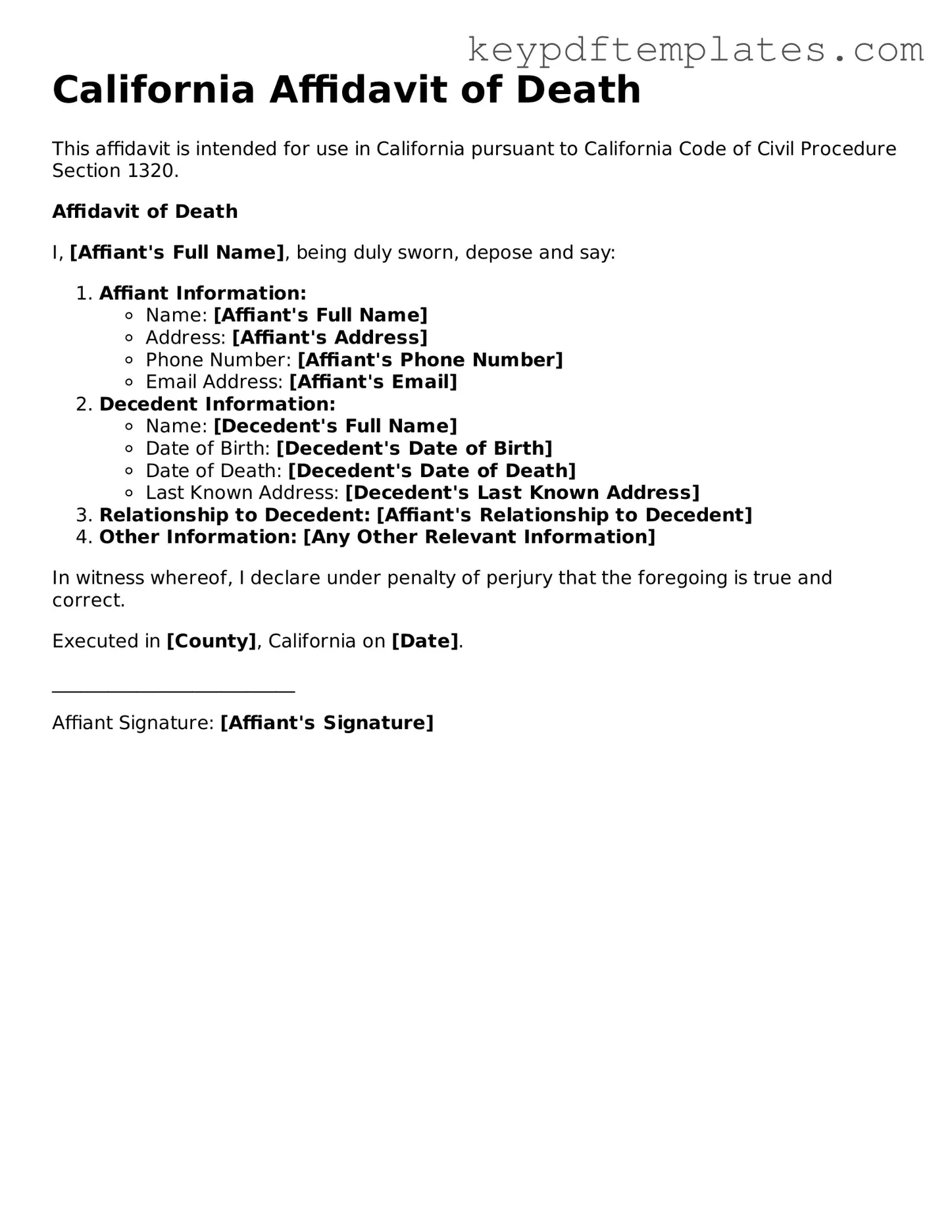Legal Affidavit of Death Document for the State of California
The California Affidavit of Death form is a legal document used to declare the passing of an individual, typically to facilitate the transfer of property or assets. This form serves as an official acknowledgment of death, providing necessary information to settle the deceased's affairs. Understanding how to properly complete and file this affidavit is essential for those managing the estate of a loved one.
Modify Document Online
